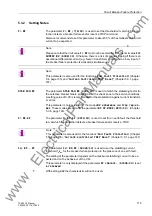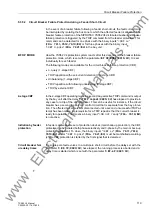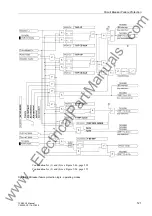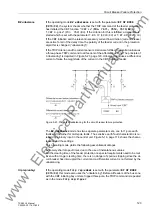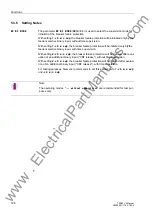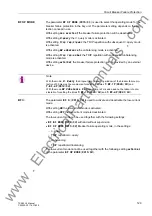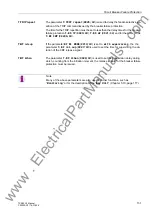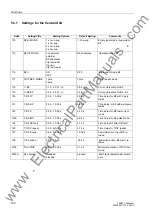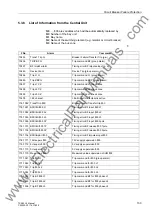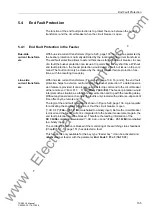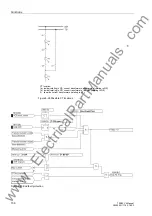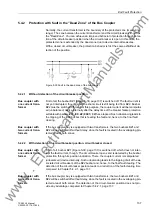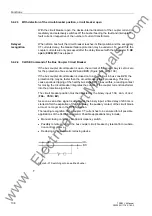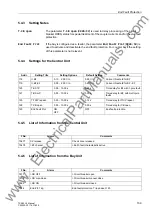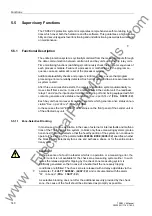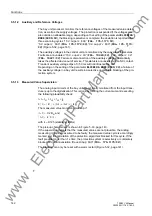
Circuit Breaker Failure Protection
127
7SS52 V4 Manual
C53000-G1176-C182-3
5.3.5.4
Failure of the Bus Coupler Circuit Breaker
If a busbar short-circuit occurs with the bus coupler closed (Figure 5-27, page 127), a
TRIP command is issued to all related feeders of this zone and to the coupling bay
units. (1)
Thus bus zone BZ A is isolated and the healthy bus zone BZ B stays in service.
In the event of a failure of the bus coupler circuit breaker, the busbar protection has to
disconnect bus zone BZ B, too (single unbalancing to BZ B).
If the current keeps on flowing in a coupler unit after the time set in parameter
T-BF-
mP
(
XX21/CU
) has elapsed, the coupler current will be unbalanced.
The trip criterion is thus fulfilled and bus zone BZ B is isolated, too. (2)
In the case of a breaker failure of the circuit breaker in the bus coupler bay (internal
breaker failure), the alarms "
TRIP BF G
"
(
10436/CU
), "
TRIP BF $03 Lx
"
(
177.1352.$03/CU, 177.1353.$03/CU, 177.1354.$03/CU
), "
TRIP $03 G
"
(
177.1341.$03/CU
), "
TranfTrip $00
"
(
176.1082.$00/CU
), "
TRIP BBP G
"
(
FNo. 10449
),
"
TRIP $03 Lx
"
(
177.1342.$03/CU, 177.1343.$03/CU,
177.1344.$03/CU
), and the group alarm "
Transf. Trip G"
(
10433/CU
) are
issued.
Figure 5-27 Fault on bus zone BZ A and failure of the bus coupler circuit breaker
5.3.5.5
Circuit Breaker Not Ready
For the detection of malfunctions in the tripping mechanism of the feeder circuit break-
er, the bay unit is provided with a binary input "
>CB not ready
" (
FNo. 7619/BU
).
If a breaker failure occurs while a signal is present at this binary input, the breaker fail-
ure protection uses the delay time
(
XX24/CU
) instead of the time
set with the parameters
(
XX20/CU
) and
XX21/CU
). No TRIP re-
petition is performed (exception: low-current mode).
With the parameter
(
XX24/CU
), the delay time of the breaker failure
protection can be reduced.
A TRIP command from the bay unit issues at the same time a transfer trip command
to trip the remote end (Figure 5-22, page 121).
www
. com



